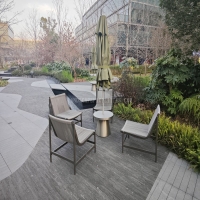Welcome to the website for landscape facilities products and knowledge.
How does the bin’s design accommodate the disposal of waste in high-wind or storm-prone areas?
In high-wind or storm-prone areas, traditional waste bins often fail to contain garbage, leading to littered streets and environmental hazards. To address this, modern bin designs incorporate several key features to withstand harsh weather conditions.
1. Weighted Bases: Many wind-resistant bins are equipped with heavy bases or anchoring systems to prevent tipping. Some models include sand or water ballast compartments for added stability.
2. Secure Lid Mechanisms: Storm-proof bins feature locking or weighted lids that stay closed during strong winds. Advanced designs use magnetic or spring-loaded closures to resist accidental openings.
3. Aerodynamic Shapes: Rounded or tapered profiles reduce wind resistance, minimizing the risk of toppling. Some bins include wind vents to equalize pressure without compromising containment.
4. Durable Materials: Heavy-duty plastics, galvanized steel, or reinforced polymers ensure longevity against extreme weather while resisting corrosion from rain or salt air.
5. High-Capacity Designs: Larger bins reduce the frequency of emptying, which is crucial when storms are forecasted. Many include partitions for recyclables to maintain organized waste streams.
These innovations not only prevent litter but also reduce maintenance costs for municipalities and businesses in vulnerable areas. By combining engineering principles with practical waste management needs, modern bins offer reliable solutions for challenging environments.
For optimal performance, experts recommend placing bins in sheltered locations when possible and using communal waste stations in particularly exposed areas. Regular maintenance checks ensure these systems remain effective throughout storm seasons.
Related search:

Recommendation
Metal structure rattan chair without armrests for single person, with woven seat and backrest.